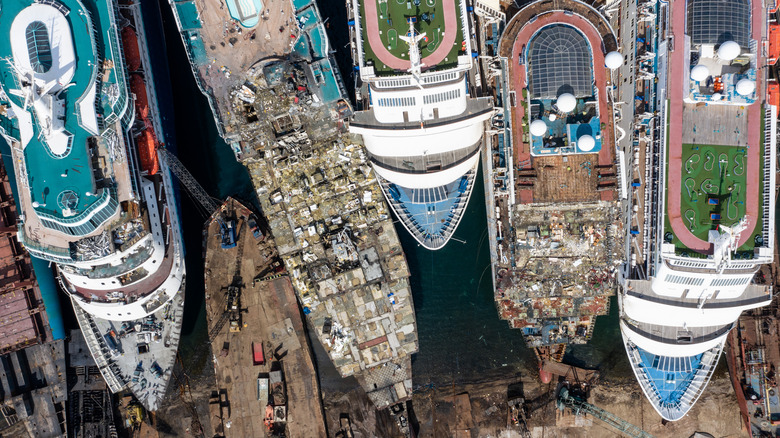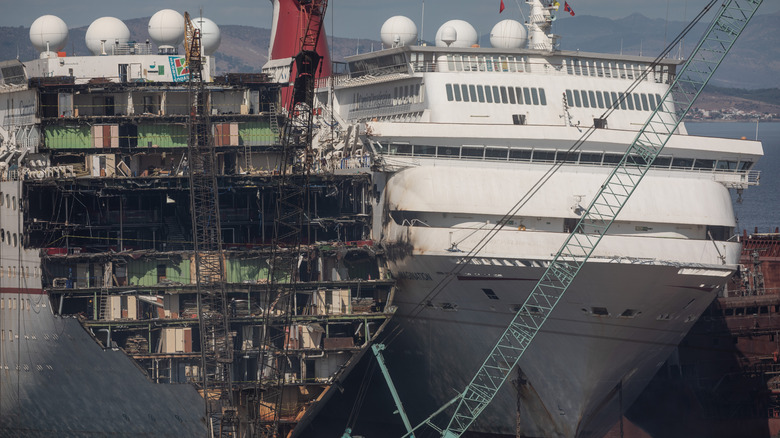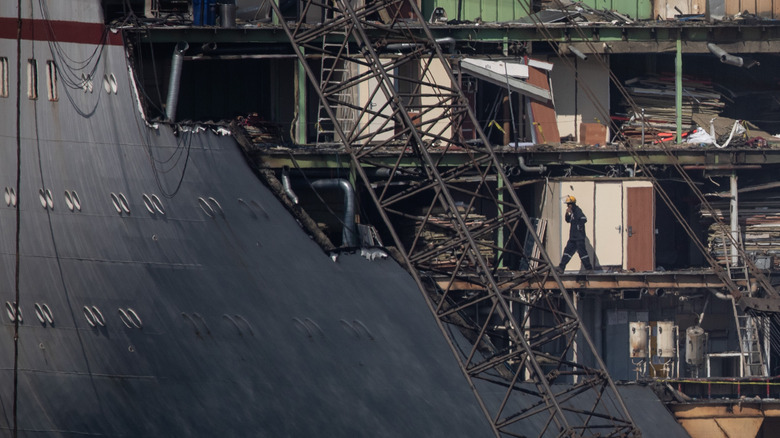Where Do Abandoned Ships Go After Their Service? Maybe This Dangerous Ship Graveyard
Cruise ships can be massive, hosting anywhere from a couple hundred to several thousand guests at a time. Fascinatingly, they keep getting bigger; some cruise ships even have travelers worried due to their enormous size. The largest cruise ships have thousands of rooms to accommodate their many passengers, meaning the biggest vessels can be more than 1,000 feet long and weigh more than 250,000 tons. Building one of these ships costs hundreds of millions of dollars, but surprisingly, many companies replace their ships after only about 15 or 20 years on the water. Often, fancier vessels that are still in good condition are sold, but what happens when a cruise line wants to get rid of one of these mammoth vessels completely?
When they are no longer valuable, cruise ships are sailed to scrapyards where they are stripped for parts. Ship-breaking yards can be found in Pakistan, Bangladesh, China, and India. However, one of the largest, Kılıçlar Ship Breaking Yard, is located in Aliaga, Turkey. Numerous cruise ships are transformed from floating leisure cities into scrap metal at this facility. For cruise lines, especially during the global pandemic of 2020, stripping these old ships for parts is a great way to recoup some of the costs. But for the workers charged with taking the vessels apart, it can be deadly.
Taking apart a cruise ship
By the time a ship is sailed to the Kılıçlar Ship Breaking Yard, the cruise line has decided that keeping it afloat isn't worth the money anymore — but that doesn't mean it doesn't have value. Ship-breaking yards buy the cruise ships as is and then take them apart piece by piece, selling whatever they can. Often, the parts of junked ships can be worth millions.
The process starts with workers taking everything that can be moved off the ship, like furniture and lights, but soon they rip apart the ship piece by piece, slicing through walls and floors with blow torches. Some things inside cruise ships, from beds and chairs to the engine itself, have value in their current state and are simply flipped to resellers in the area. Other parts, like the metal of the ship's hull, are melted down and used to build new items.
An extremely dangerous job
Employees at shipyards that dismantle cruise ships for scrap face extreme danger. The demolition occurs outdoors, with the vessels still mostly in the water, so those working on them are in all weather conditions year-round. Many cruise ships are more than 12 feet high, and workers have to clamber up ladders and around partially demolished decks to do their jobs, making slipping or having a chunk of debris fall from above serious hazards. When workers slice and burn through the ship, the chemicals released into the air can be toxic.
These dangerous conditions have been known since at least 2002, when a Greenpeace investigation noted how terrible conditions were for the employees of ship-breaking yards like Kılıçlar. While there have been some improvements, there is no doubt that taking apart old cruise ships remains one of the most dangerous ways to make a living. According to experts interviewed by The Black Sea in 2023, asbestos, in particular, is a concern, and some fear that workers who inhaled the fiber may die from it within two decades.


